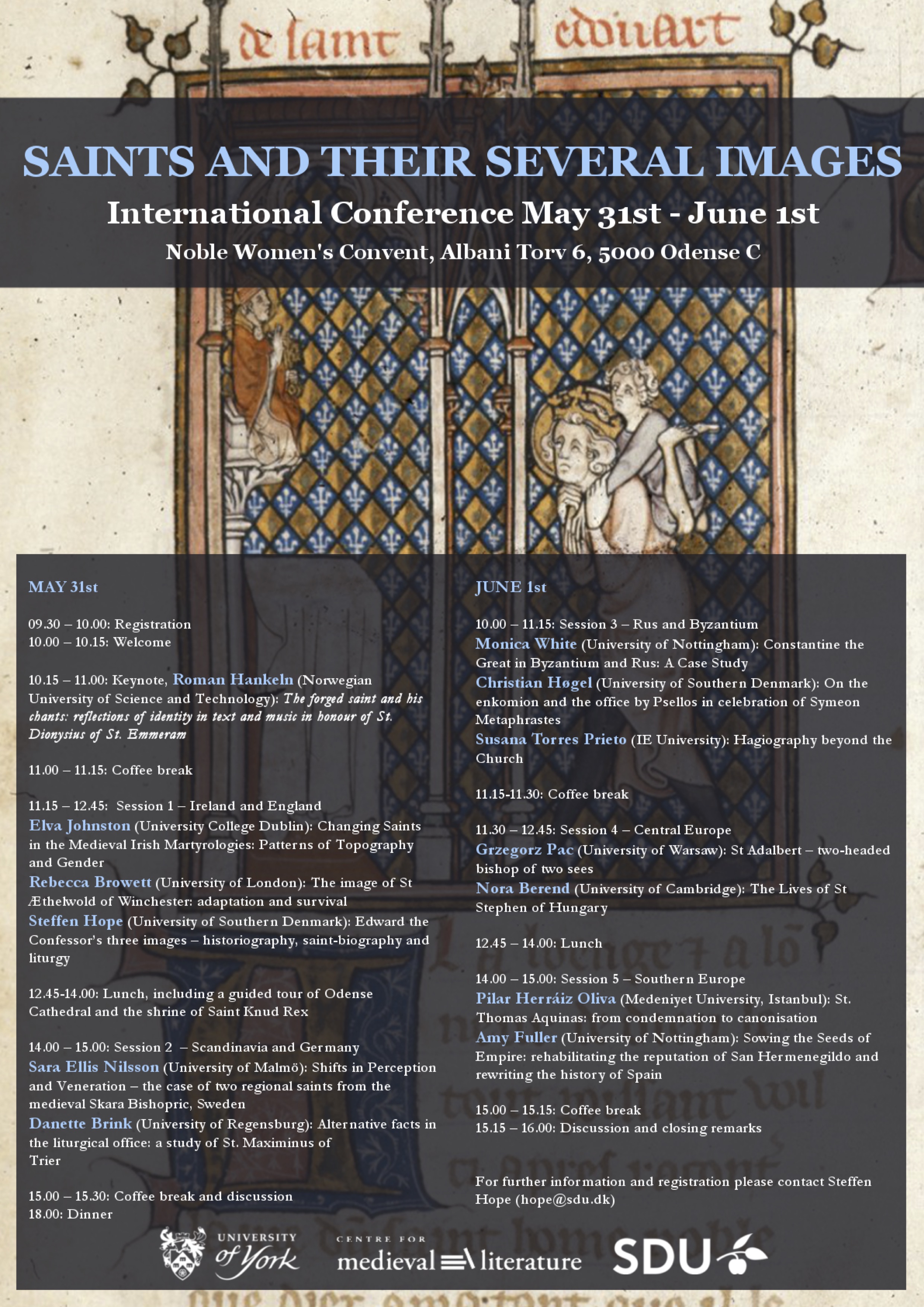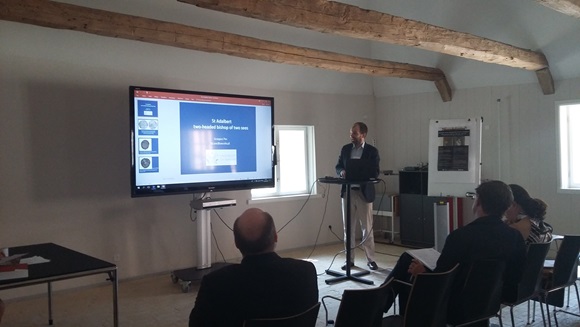
Saints and their several images – a CML conference in Odense
Steffen Hope writes about a conference he recently organized in Odense.
From May 31st to June 1st, a group of medievalists gathered in the Noble Women’s Convent in Odense to talk about saints in the Middle Ages. The purpose of this conference was to explore the plurality, the complexity and sometimes the instability in the formulation and depiction of one and the same figure within the medieval cult of saints. Today often understand saints in terms of fixed iconography and established legends. However, a saint’s iconography often developed over time, and a saint’s legend could evolve into several offshoots, some of which were at odds with each other and some of which demonstrated a significant departure from the first story. Similarly, the formulation of a saint could depend on the medium through which that formulation was presented, meaning that different source materials can yield different presentations of one and the same figure, either due to formal constraints inherent in the source or because the sources have different aims in the way the saint is utilised. All this means that we need to ask a wide variety of methodological questions when dealing with the medieval cult of saints, and we often have to draw on sources that lie beyond our immediate comfort zone. The study of the cult of saints in the Middle Ages, in other words, is a truly interdisciplinary field, and requires from us that we enter into conversations with experts from many academic and geographical backgrounds.
This conference, Saints and their several images, was organised around these principles of interdisciplinarity and multilingualism, and we had therefore brought together thirteen scholars who represented the disciplines of history, musicology, philosophy and philology. These scholars also represented a wide geographical and chronological spectrum, ranging from Late Antiquity to Early Modern Period, and addressing material from such separate localities as Byzantium and the Spanish colonies in America as well as Italy and Sweden. The result was a forum in which everyone could learn something, both in terms of methodology and in terms of research subjects.
The geographical and chronological variety of these papers also resulted in many different ways to approach the fundamental issue of the conference, namely to emphasise change, fluidity, evolution and instability within the cult of a saint. Just to give some examples: Rebecca Browett (University of London) spoke about how Æthelwold of Winchester’s (d.984) was depicted both as an overzealous reformer and as a loving father figure, depending on what sources you read. Roman Hankeln (Norwegian University of Science and Technology) talked about how the monks of St. Emmeram in Regensburg made the claim that Saint Dionysus had moved from Saint-Denis in France to their own monastery, and thus established a new legend around an old saint. Pilar Herráiz Oliva (Medeniyet University, Istanbul) talked about how Thomas Aquinas (d.1274) went from being criticised for some of his theses to being canonised as a saint because of his intellectual output within a fifty-year period. These and the rest of the papers all addressed the conference’s fundamental issue in ways that opened up for discussion and that illustrated the complexity of saints and their several images in the Middle Ages.
This conference will, hopefully, be just a beginning, as there are many more issues for us to discuss concerning how we approach, deal with and present the medieval cult of saints. In this case we had adopted the term of the image as a way to talk about formulations about saints, but there were also discussed ways in which we should include other terms or combine different terms, and how we should classify our sources in our research. While several important points were made in the course of the conference, more issues remain to be addressed within this framework of plurality and instability that underpinned much of our discussion in Odense.
The photgraphs were taken by Charlotte Vegge Thorup Hansen, who assisted with practicalities during the conference.
The image of the poster is of Saint Edward the Confessor carrying a crippled man, from British Library MS Egerton 745, French collection of saints, first half of the 14th century.



